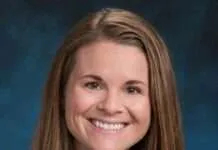My son is one of the many Americans with cleft lip and palate. The specifics of each affected individual’s situation vary, but one thing they have in common is that they will be having surgery. Lots of surgery. Although most individuals with orofacial clefts, including my son, are otherwise healthy and lead normal lives, the process of restoring a normal smile, normal speech, normal chewing, involves many steps from birth into adulthood.
Most of his surgeries have blurred together in my mind, however, his first bone graft remains starkly vivid.
In this surgery, bone is removed from the hip for implantation in the ridge under the nose, where your front teeth are anchored. The pain where the bone was removed was excruciating. He was hospitalized for four days, and once home we struggled to keep him comfortable despite acetaminophen, ibuprofen, and two different opioids.
We were understandably dismayed ten years later to learn he would have to undergo this procedure again. Not enough bone had grown from the earlier graft to support the next stage of the repair.
It was with great trepidation that we checked into the hospital for surgery earlier this summer. Despite the reassurances of our surgeon, we both expected the same gauntlet we had faced last time.
We were wrong.
In the intervening years, a new delivery system for an injectable anesthetic had been developed, and then approved for use in young people. His surgeon used this medication at the graft harvest site. The difference was almost inconceivable. He needed minimal supplemental pain medication during our single night in the hospital, and once discharged took only the occasional dose of Tylenol or Motrin. I suspect those doses were prompted mostly by the fear that it might start to hurt more, and not by pain itself.
Like all of medicine, surgery has experienced change at an ever-accelerating pace, but the apparent “revolutions” are built on a foundation of step-by-step science. In medical school, I watched the first laparoscopic nephrectomy performed at the University of Iowa, a major tertiary care center. This amazing “new” technology could trace its history back nearly 200 years, to a German doctor who invented a primitive precursor. Advancements in both medicine and technology have brought us to today, when endoscopic, laparoscopic, and robotic surgeries have become commonplace.
The path to developing new techniques and technologies may not be smooth, but we are the beneficiaries of pioneers and scientists who move medicine forward. I am grateful for them all, as a doctor, and as a parent.
Debra Johnston, M.D. is part of The Prairie Doc® team of physicians and currently practices family medicine in Brookings, South Dakota. Follow The Prairie Doc® based on science, built on trust, at www.prairiedoc.org and on Facebook featuring On Call with the Prairie Doc® a medical Q&A show, streaming live on Facebook most Thursdays at 7 p.m. central.




